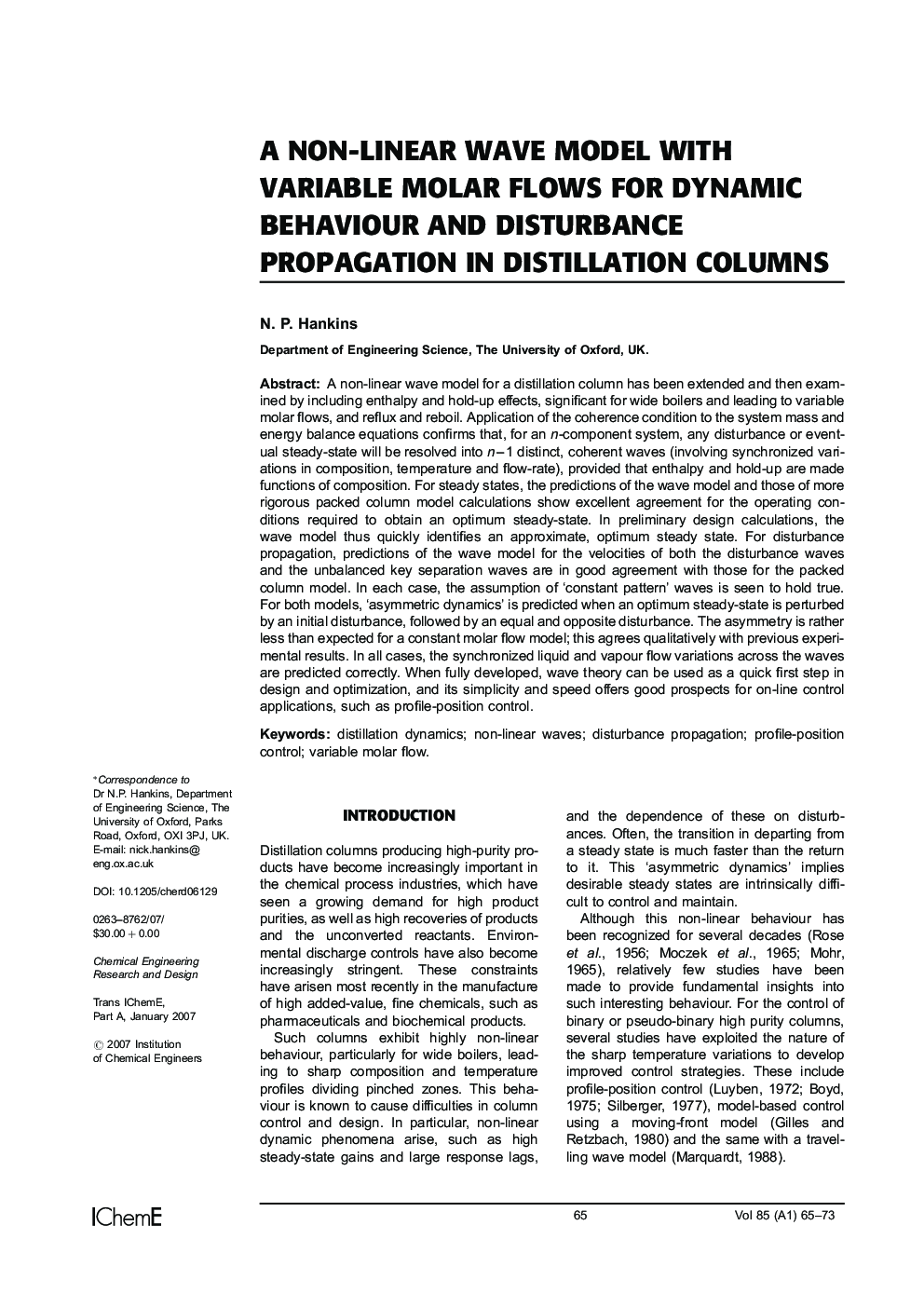| کد مقاله | کد نشریه | سال انتشار | مقاله انگلیسی | نسخه تمام متن |
|---|---|---|---|---|
| 621661 | 882569 | 2007 | 9 صفحه PDF | دانلود رایگان |

A non-linear wave model for a distillation column has been extended and then examined by including enthalpy and hold-up effects, significant for wide boilers and leading to variable molar flows, and reflux and reboil. Application of the coherence condition to the system mass and energy balance equations confirms that, for an n-component system, any disturbance or eventual steady-state will be resolved into n−1 distinct, coherent waves (involving synchronized variations in composition, temperature and flow-rate), provided that enthalpy and hold-up are made functions of composition. For steady states, the predictions of the wave model and those of more rigorous packed column model calculations show excellent agreement for the operating conditions required to obtain an optimum steady-state. In preliminary design calculations, the wave model thus quickly identifies an approximate, optimum steady state. For disturbance propagation, predictions of the wave model for the velocities of both the disturbance waves and the unbalanced key separation waves are in good agreement with those for the packed column model. In each case, the assumption of ‘constant pattern’ waves is seen to hold true. For both models, ‘asymmetric dynamics’ is predicted when an optimum steady-state is perturbed by an initial disturbance, followed by an equal and opposite disturbance. The asymmetry is rather less than expected for a constant molar flow model; this agrees qualitatively with previous experimental results. In all cases, the synchronized liquid and vapour flow variations across the waves are predicted correctly. When fully developed, wave theory can be used as a quick first step in design and optimization, and its simplicity and speed offers good prospects for on-line control applications, such as profile-position control.
Journal: Chemical Engineering Research and Design - Volume 85, Issue 1, 2007, Pages 65–73